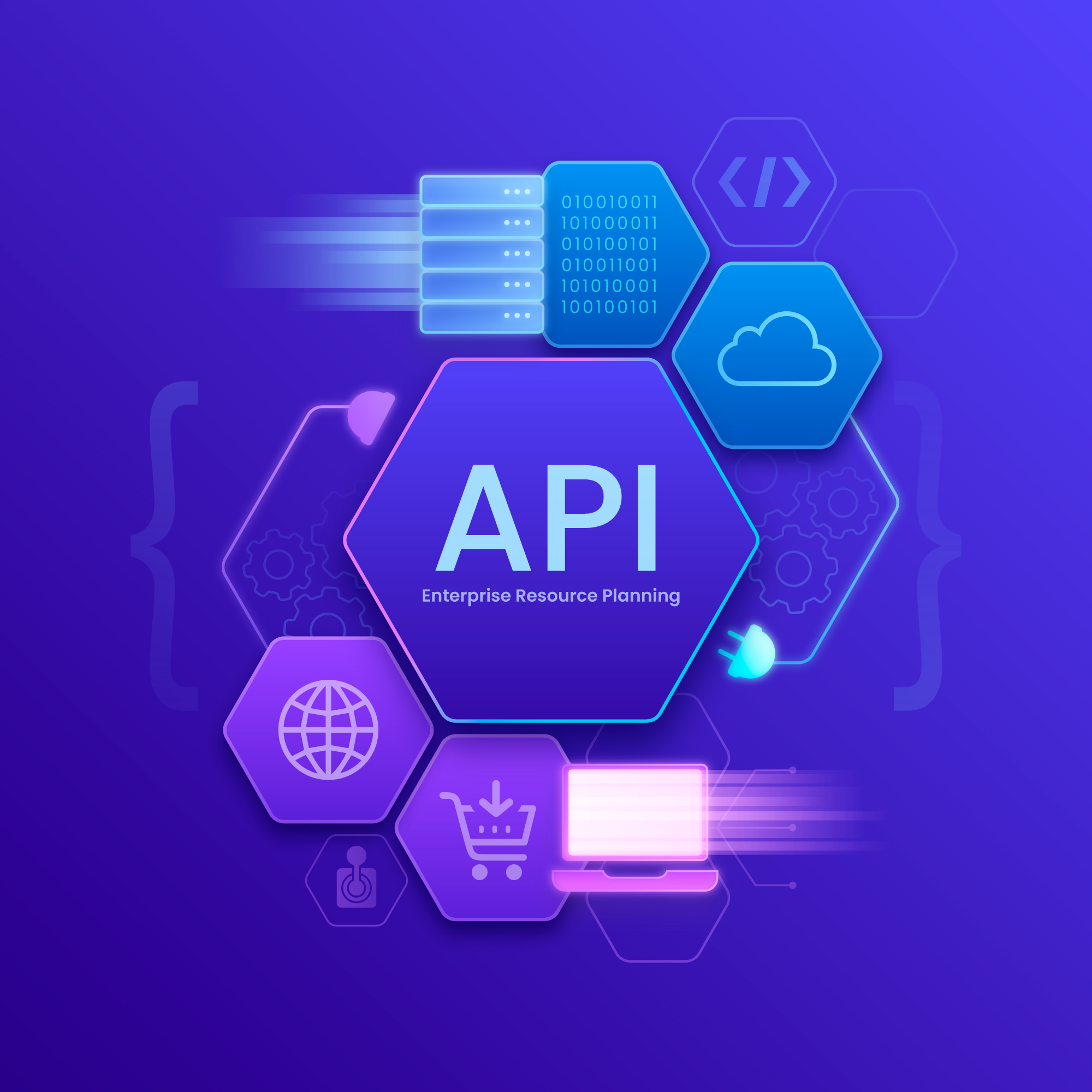
Common Pitfalls in Workday EIB Integrations and How to Avoid Them
Did you know that nearly 60% of Workday Enterprise Interface Builder (EIB) integrations encounter issues on their first attempt due to avoidable configuration errors? For HR professionals, IT administrators, and Workday consultants, these pitfalls can lead to costly delays, data inaccuracies, and frustrated teams. Workday’s EIB is a powerful tool for streamlining bulk data uploads and system integrations, but its ease of use can sometimes mask underlying complexities that trip up even seasoned professionals.
In this comprehensive guide, we’ll explore the most common pitfalls in Workday EIB integrations and provide actionable solutions to ensure success. From poor data mapping to inadequate testing, we’ll uncover the challenges that can derail your project and offer expert strategies to avoid them. Whether you’re managing payroll integrations or syncing employee data with third-party systems, this article will equip you with the knowledge to optimize your integrations. For expert guidance, explore Sama Integrations’ Workday solutions to streamline your processes and maximize ROI.
Understanding Workday EIB Integrations
What is Workday EIB?
Workday’s Enterprise Interface Builder (EIB) is a no-code, user-friendly tool designed to facilitate bulk data imports and exports within the Workday platform. It allows organizations to integrate Workday with external systems, such as payroll providers, CRM platforms, or financial tools, without requiring extensive programming expertise. EIB’s graphical interface simplifies the process of creating integrations, making it accessible to HR professionals and IT administrators alike.
Key Use Cases for EIB
EIB is versatile and supports a range of integration scenarios, including:
- Payroll Syncing: Exporting employee data (e.g., salaries, deductions) to third-party payroll systems like ADP or Paychex.
- Benefits Management: Importing benefits enrollment data from external providers into Workday.
- Time Tracking: Integrating time-tracking tools like Kronos with Workday for accurate workforce management.
- CRM Integration: Syncing employee and customer data with platforms like Salesforce to enhance sales team efficiency.
- Data Migration: Transitioning legacy HR data into Workday during system rollouts.
Benefits of EIB
EIB offers several advantages that make it a cornerstone of Workday’s integration ecosystem:
- Automation: Reduces manual data entry, saving time and minimizing errors.
- Scalability: Supports large-scale data transfers for organizations of all sizes.
- Cost-Effectiveness: Eliminates the need for complex middleware, reducing integration costs.
- User-Friendly Interface: Enables non-technical users to configure integrations with minimal training.
Despite these benefits, EIB integrations can be fraught with challenges if not executed properly. For expert support in setting up robust EIB integrations, consider Sama Integrations’ consulting services, which provide tailored guidance for your organization’s needs.
Struggling with Workday EIB Integrations?
Avoid costly pitfalls and streamline your Workday EIB integrations with our expert support. From precise data mapping to robust testing and security, we deliver tailored solutions to ensure seamless, efficient integrations that drive business success.
Common Pitfalls in Workday EIB Integrations
EIB integrations, while powerful, are not immune to errors. Below, we outline seven common pitfalls, their impacts, and real-world examples to illustrate their consequences.
1. Poor Data Mapping
Description: Data mapping involves aligning fields between Workday and external systems to ensure accurate data transfer. Poor data mapping occurs when fields are misaligned or incorrectly formatted, leading to data corruption or failed integrations.
Example: A retail company attempted to sync employee payroll data with an external payroll provider using EIB. Due to a mismatch between Workday’s “Employee ID” field and the provider’s “Worker ID” field, 30% of employee records were rejected, causing a delay in payroll processing and costing the company 20 hours of manual rework.
Impact:
- Operational Delays: Incorrect data mappings delay critical processes like payroll or benefits administration.
- Data Inaccuracy: Mismatched fields can introduce errors, affecting compliance and reporting.
- Increased Costs: Manual corrections are time-consuming and resource-intensive.
For help resolving data mapping issues, explore Sama Integrations’ support and troubleshooting services.
2. Inadequate Testing
Description: Skipping or rushing testing in development or staging environments can lead to unforeseen issues in production. EIB integrations require thorough testing to validate data flows, transformations, and error handling.
Example: A mid-sized tech firm deployed an EIB integration to import benefits data without testing in a sandbox environment. In production, the integration failed due to an unsupported date format, resulting in 500 employee records being incorrectly processed and a week-long delay to fix the issue.
Impact:
- Production Downtime: Uncaught errors disrupt live operations.
- Employee Frustration: Data errors can affect employee trust in HR systems.
- Costly Fixes: Resolving issues in production is more expensive than pre-deployment testing.
3. Security Oversights
Description: EIB integrations often handle sensitive data, such as employee salaries or personal information. Failing to configure proper security protocols, such as Integration System User (ISU) permissions or encryption, can expose data to breaches.
Example: A healthcare organization neglected to implement PGP encryption for an outbound EIB transferring employee data to a benefits provider. This oversight led to a temporary data exposure, requiring a costly compliance audit and remediation.
Impact:
- Compliance Risks: Breaches can violate regulations like GDPR or HIPAA.
- Reputation Damage: Data leaks erode stakeholder trust.
- Financial Penalties: Non-compliance can result in hefty fines.
4. Template Misconfigurations
Description: EIB relies on templates (e.g., Excel or CSV) to define data structures for imports and exports. Errors in template setup, such as missing required fields or incorrect formatting, can cause integration failures.
Example: A financial services company used an outdated EIB template to import merit plan data. The template lacked a newly required field for bonus calculations, causing the integration to fail and delaying merit reviews by two weeks.
Impact:
- Process Delays: Failed uploads halt critical HR processes.
- Manual Rework: Correcting templates requires additional effort.
- Data Inconsistencies: Errors in templates can propagate incorrect data across systems.
5. Lack of Scalability Planning
Description: EIB integrations built without considering future growth may struggle to handle increased data volumes or new system requirements, leading to performance bottlenecks.
Example: A growing e-commerce company designed an EIB integration to sync employee data with a single payroll provider. As the company expanded to multiple providers, the integration couldn’t scale, requiring a complete rebuild that cost $50,000 in consulting fees.
Impact:
- System Bottlenecks: Non-scalable integrations slow down processes as data grows.
- Increased Costs: Redesigning integrations is resource-intensive.
- Lost Opportunities: Inflexible systems hinder business expansion.
6. Version Compatibility Issues
Description: Workday’s biannual updates can introduce changes that break existing EIB integrations if not tested for compatibility. Failing to monitor release notes or test updates can lead to unexpected failures.
Example: After a Workday update, a manufacturing firm’s EIB integration for time-tracking data stopped functioning due to a change in API endpoints. The issue went unnoticed for a week, resulting in inaccurate timesheet data and payroll disputes.
Impact:
- Integration Failures: Updates can render integrations obsolete.
- Compliance Risks: Inaccurate data affects regulatory reporting.
- Downtime: Resolving compatibility issues disrupts operations.
7. Insufficient Error Handling
Description: EIB integrations may fail to account for edge cases, such as missing data or system timeouts, leading to unhandled errors that disrupt workflows.
Example: A logistics company’s EIB integration for employee onboarding lacked error handling for duplicate records. When duplicate employee IDs were imported, the integration crashed, delaying onboarding for 50 new hires.
Impact:
- Workflow Disruptions: Unhandled errors halt integrations.
- Manual Intervention: Teams must spend time diagnosing and fixing issues.
- Employee Experience: Errors can frustrate end-users, such as new hires.
For expert assistance in troubleshooting these pitfalls, visit Sama Integrations’ support and troubleshooting services.
Struggling with Workday EIB Integrations?
Avoid costly pitfalls and streamline your Workday EIB integrations with our expert support. From precise data mapping to robust testing and security, we deliver tailored solutions to ensure seamless, efficient integrations that drive business success.
How to Avoid These Pitfalls
Avoiding EIB integration pitfalls requires proactive planning, robust processes, and expert support. Below are actionable solutions for each pitfall, complete with practical tips and best practices.
1. Avoiding Poor Data Mapping
Solution: Use automated mapping tools and validate mappings with stakeholders before deployment.
- Validate with Stakeholders: Engage HR, IT, and business units to confirm field alignments. For example, ensure Workday’s “Employee ID” matches the external system’s equivalent field.
- Use Workday Tools: Leverage Workday’s built-in mapping validation tools to identify discrepancies early.
- Document Mappings: Create a data mapping document to serve as a reference for future integrations.
- Automate Where Possible: Use tools like SnapLogic to streamline mapping for complex integrations.
Tip: Conduct a dry run with a small dataset to verify mappings before processing large volumes.
For custom mapping solutions, explore Sama Integrations’ custom development services.
2. Preventing Inadequate Testing
Solution: Implement a multi-stage testing process across development, staging, and sandbox environments.
- Use a Sandbox: Test integrations in a Workday sandbox to mimic production conditions without risking live data.
- Test Edge Cases: Simulate scenarios like missing data, incorrect formats, or system timeouts.
- Involve End-Users: Include HR and finance teams in user acceptance testing (UAT) to ensure functionality meets business needs.
- Automate Testing: Use automated testing tools to validate large datasets efficiently.
Tip: Create a testing checklist that includes data validation, error handling, and performance metrics.
3. Mitigating Security Oversights
Solution: Follow Workday’s security best practices and conduct regular audits.
- Configure ISUs Properly: Create Integration System Users (ISUs) with granular permissions to limit data access.
- Enable Encryption: Use PGP encryption for outbound data transfers to protect sensitive information.
- Conduct Security Audits: Regularly review integration logs and permissions to identify vulnerabilities.
- Train Teams: Educate staff on Workday’s security protocols to prevent accidental exposures.
Tip: Use Workday’s security reporting tools to monitor access and detect anomalies.
4. Correcting Template Misconfigurations
Solution: Use pre-built templates and validate them with Workday’s tools.
- Leverage Workday Templates: Start with Workday’s pre-built EIB templates to ensure compatibility.
- Validate Templates: Use Workday’s template validation feature to check for missing or incorrect fields.
- Standardize Formats: Ensure templates adhere to Workday-supported formats like CSV or Excel.
- Version Control: Maintain versioned templates to track changes and avoid using outdated configurations.
Tip: Store templates in a centralized repository for easy access and reuse.
5. Planning for Scalability
Solution: Design integrations with modular architectures to support future growth.
- Use Modular Designs: Build integrations with reusable components to accommodate new systems or data types.
- Leverage Workday Studio: For complex, scalable integrations, consider Workday Studio alongside EIB.
- Monitor Performance: Track integration performance to identify bottlenecks as data volumes grow.
- Plan for Expansion: Anticipate future integrations (e.g., additional payroll providers) during the design phase.
For scalable integration solutions, explore Sama Integrations’ custom development services.
6. Managing Version Compatibility
Solution: Monitor Workday release notes and test updates in a sandbox.
- Review Release Notes: Regularly check Workday Community for updates that may affect integrations.
- Test in Sandbox: Deploy updates in a sandbox environment to identify compatibility issues before production.
- Automate Notifications: Set up alerts for Workday updates to stay informed of changes.
- Engage Experts: Work with consultants to assess the impact of updates on existing integrations.
For ongoing maintenance, consider Sama Integrations’ managed integration services.
7. Enhancing Error Handling
Solution: Build robust logging and notification systems to manage edge cases.
- Implement Logging: Use Workday’s integration logs to track errors and performance issues.
- Set Up Notifications: Configure alerts for integration failures to enable rapid response.
- Handle Edge Cases: Design integrations to manage scenarios like duplicate records or missing data.
- Test Error Scenarios: Simulate failures during testing to ensure robust error handling.
Tip: Use Workday’s RaaS (Report as a Service) to monitor integration performance in real time.
For expert error handling solutions, visit Sama Integrations’ support and troubleshooting services.
Struggling with Workday EIB Integrations?
Avoid costly pitfalls and streamline your Workday EIB integrations with our expert support. From precise data mapping to robust testing and security, we deliver tailored solutions to ensure seamless, efficient integrations that drive business success.
Best Practices for Successful EIB Integrations
To ensure long-term success with Workday EIB integrations, follow these best practices:
- Engage Stakeholders Early: Involve HR, IT, and business units from the planning stage to align integrations with organizational goals.
- Document Processes: Maintain detailed documentation of integration configurations, mappings, and templates for future reference.
- Leverage Workday Community: Use Workday Community resources, such as forums and documentation, to stay updated on best practices and new features.
- Partner with Experts: Collaborate with experienced integrators to avoid common pitfalls and optimize performance. Sama Integrations’ consulting services offer tailored expertise for seamless integrations.
- Monitor Continuously: Set up regular monitoring and maintenance schedules to catch issues early and ensure ongoing performance.
By adopting these strategies, organizations can maximize the efficiency and reliability of their EIB integrations, driving better business outcomes.
Struggling with Workday EIB Integrations?
Avoid costly pitfalls and streamline your Workday EIB integrations with our expert support. From precise data mapping to robust testing and security, we deliver tailored solutions to ensure seamless, efficient integrations that drive business success.
Conclusion
Workday EIB integrations are a powerful tool for streamlining HR and business processes, but they come with challenges that can derail even the best-laid plans. By understanding common pitfalls—such as poor data mapping, inadequate testing, and security oversights—and implementing proactive solutions, organizations can achieve seamless, efficient integrations. With proper planning, robust testing, and expert support, you can avoid costly errors and unlock the full potential of Workday.
For comprehensive support in navigating these challenges, Sama Integrations offers expert consulting services to guide your EIB setup and support and troubleshooting services to resolve issues quickly. Ready to optimize your Workday integrations? Contact Sama Integrations today for a consultation and take the first step toward a smoother, more efficient integration process.
References:
- Workday. (2025). Workday Integration Cloud Documentation.
- Gartner. (2023). Critical Capabilities for Cloud ERP for Service-Centric Enterprises.
- SnapLogic. (2023). What is Workday EIB?
- Surety Systems. (2023). Workday EIB: Your Complete Guide to Data Management Strategy.
- Reddit. (2024). r/workday: Some basic integration questions.
Struggling with Workday EIB Integrations?
Avoid costly pitfalls and streamline your Workday EIB integrations with our expert support. From precise data mapping to robust testing and security, we deliver tailored solutions to ensure seamless, efficient integrations that drive business success.




